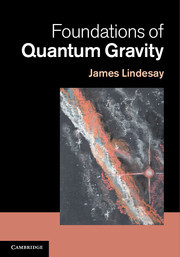Description
Foundations of Quantum Gravity
Author: Lindesay James
Explores how quantum coherence can be consistently incorporated into Einstein's theory of gravitation, for researchers in the foundations of physics.
Language: English
Subjects for Foundations of Quantum Gravity:
Approximative price 156.60 €
In Print (Delivery period: 14 days).
Add to cart
Publication date: 05-2013
416 p. · 17.8x25.2 cm · Hardback
416 p. · 17.8x25.2 cm · Hardback
Description
/li>Contents
/li>Biography
/li>
Exploring how the subtleties of quantum coherence can be consistently incorporated into Einstein's theory of gravitation, this book is ideal for researchers interested in the foundations of relativity and quantum physics. The book examines those properties of coherent gravitating systems that are most closely connected to experimental observations. Examples of consistent co-gravitating quantum systems whose overall effects upon the geometry are independent of the coherence state of each constituent are provided, and the properties of the trapping regions of non-singular black objects, black holes and a dynamic de Sitter cosmology are discussed analytically, numerically and diagrammatically. The extensive use of diagrams to summarise the results of the mathematics enables readers to bypass the need for a detailed understanding of the steps involved. Assuming some knowledge of quantum physics and relativity, the book provides text boxes featuring supplementary information for readers particularly interested in the philosophy and foundations of the physics.
Introduction; Part I. Galilean and Special Relativity: 1. Classical special relativity; 2. Quantum mechanics, classical, and special relativity; 3. Microscopic formulations of particle interactions; 4. Group theory in quantum mechanics; Part II. General Relativity: 5. Fundamentals of general relativity; 6. Quantum mechanics in curved space-time backgrounds; 7. The physics of horizons and trapping regions; 8. Cosmology; 9. Gravitation of interacting systems; Appendixes; References; Index.
James Lindesay is a Professor of Physics at Howard University, and was the founding Director of the Computational Physics Lab. He has been a visiting professor at Hampton University and Stanford University and a visiting faculty scientist at the Massachusetts Institute of Technology.
© 2024 LAVOISIER S.A.S.
These books may interest you

Quantum Black Holes 68.56 €

Quantum Gravity 146.26 €

Asymptotic Safety and Black Holes 105.49 €

